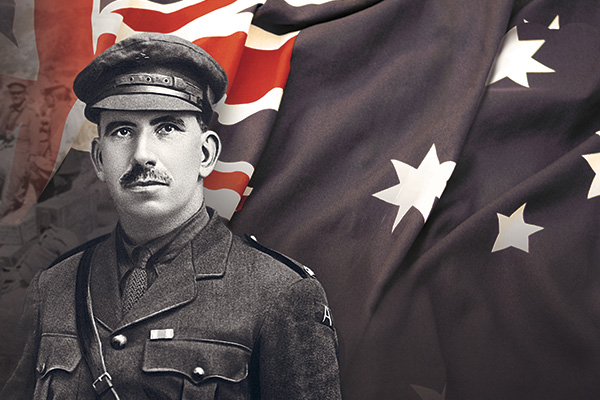New biography of Gallipoli chaplain debunks secular soldier myth
An Anzac chaplain worshipped by soldiers despite being a wowser shows the influential role Christians played in the Great War, a new biography reveals.
William “Fighting Mac” McKenzie became the most famous Anzac by the end of the war even though he stood for “almost everything the typical digger loved to hate,” says Daniel Reynaud, author of The Man the Anzacs Revered and associate professor of history at Avondale College of Higher Education. “He railed against booze, brothels, betting and bad language, and he ran frequent evangelistic campaigns for the Anzacs where he forcefully appealed to them to become Christians. But the soldiers just about worshipped him.”
The Scottish-born Salvation Army officer served on Gallipoli and on the Western Front as chaplain of the Australian Imperial Force’s 4th Battalion. “His tireless energy on the soldiers’ behalf earned their respect, while his charismatic personality and integrity of character won their love,” says Reynaud.
While stationed in Cairo before the Gallipoli landings, McKenzie not only preached against the brothels but also went to the red-light district and dragged men out, putting them on a tram back to camp. On Gallipoli, McKenzie conducted burial services, often under shell fire. But he went further, finding chocolates for each man, or cutting steps into a steep part of a track at night. At the Battle of Lone Pine, McKenzie should have been in the rear trenches, but he followed the charge, carrying just a spade. He needed it: over the next few weeks, he sorted the living from the dead and buried 450 men. For his actions, McKenzie received the Military Cross.
Understanding his story “adds a new dimension to the Anzac legend, one that has been relentlessly indoctrinated to paint the Anzacs as indifferent to religion,” says Reynaud. “Yes, the majority of soldiers were secular, but Christians were strongly represented and many chaplains engaged the Anzacs in spiritual things.” About one in four of the diaries Reynaud read makes positive references to religion. “That’s startlingly high for a secular legend! If we’re to understand and memorialise Anzac fully now, we need to know Christians were active, visible and influential in the Anzac story. McKenzie is the most obvious and most powerful example of this.”
Historian, author and broadcaster Dr Michael McKernan says the strength of The Man the Anzacs Revered, “at its very centre, is the account of McKenzie’s religious impulses and his spirituality.” Writing in the foreword of the book, McKernan describes McKenzie as a “beacon of hope.” His life of practical Christianity “told soldiers that even in the midst of war, all men had an obligation to be doing good to others, of caring for others, and of maintaining—insofar as was possible—the values and standards each soldier had learnt at home.”
By the end of the war, McKenzie had led between 2000 and 3000 men to Christ. He became one of Australia’s most popular and enduring celebrities. People mobbed him just to shake his hand, and his visits to cities and towns were characterised as being like a Royal Progress.
But McKenzie is now almost completely unknown. “He was popular with people rather than institutions,” says Reynaud. “When those who remembered him died, there were no remaining memorials to his work and legacy. As the Anzac legend has no real place for men of faith, he and other Anzacs of religious conviction have been overlooked.”
And this is why Reynaud writes. “If we care about the Anzacs, then we ought to be interested in about what and who they cared. McKenzie stood at the pinnacle of their respect, admiration and love. He mattered to them; he ought to matter to us.”
Reynaud is also author of Celluloid Anzacs: The Great War Through Australian Cinema and The Hero of the Dardanelles and Other World War One Silent Dramas.
The Hero of the Dardanelles, released in 1915, is Australia’s first Gallipoli movie—Reynaud recovered and partially reconstructed it. Released on DVD by the National Film and Sound Archive this month, the movie is now publicly available for the first time.
The Man the Anzacs Revered is published by Signs Publishing.
The Man the Anzacs Revered
Associate Professor Daniel Reynaud’s The Man the Anzacs Revered is the most comprehensive and accurate biography of William “Fighting Mac” McKenzie. Purchase the book at Adventist Book Centres, Koorong or hopeshop.com.
hopeshop.comShare

